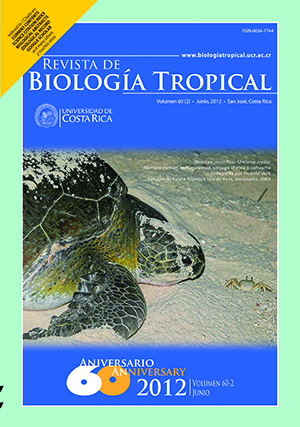Abstract
Reproductive biology of Anisotremus interruptus (Perciformes: Haemulidae) in the Mexican Central Pacific. Anisotremus interruptus is a widely distributed and commercially important species in the Eastern Pacific. A multi-year research on the reproduction of this species was carried out in coastal waters of Jalisco, Mexico. For this purpose, monthly samples were gathered with gillnets of different mesh sizes from 1998-2008. A total of 1 090 individuals were collected with a total length range between 15.6-61.0cm. Significant differences from expected 1:1 ratio were found for sex ratios in the total sample and for each size class, but not when comparisons among months and years were done. Temporal variations of the gonadosomatic index and proportions of maturation stages suggest that the main reproductive period is from February to May, although some less intensive spawning events were observed in other months. Seven stages of oocytes development were identified. Oocytes in different stages of development were identified in ovaries classified as mature, suggesting an asynchronic type of gonad development. Mean maturation length (L50) was 31.0 for females and 29.7cm for males. The internal organization of testes is of lobular type.Comments

This work is licensed under a Creative Commons Attribution 4.0 International License.
Copyright (c) 2012 Revista de Biología Tropical
Downloads
Download data is not yet available.






